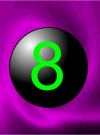Henbane
"These, the Henbane seeds, and the juice," says Gerard, "when taken internally, cause an unquiet sleep, like unto the sleep of drunkenness, which continueth long, and is deadly to the patient."
Added Jul 24, 2010
| 8,423 Reads
The Black Henbane grew almost everywhere about England, in Gerard's day, by highways, in the borders of fields, on dunghills, and in untoiled places. But now it has become much less common as a rustic herb in this country. We find it occasionally in railway cuttings, and in rubbish on waste places, chiefly on chalky ground, and particularly near the sea. The plant is biennial, rather large, and dull of aspect, with woolly sea-green leaves, and bearing bell-shaped flowers of a lurid, creamy colour, streaked and spotted with purple. It is one of the Night-shade tribe, having a heavy, oppressive, sub-fetid odour, and being rather clammy to the touch. This herb is also called Hogsbean, and its botanical name, Hyoscyamus, signifies "the bean of the hog," which animal eats it with impunity, though to mankind it is a poisonous plant. It has been noticed in Sherwood Forest, that directly the turf is pared Henbane springs up. "To wash the feet," said Gerard, "in a decoction of Henbane, as also the often smelling to the flowers, causeth sleep." Similarly famous anodyne necklaces were made from the root, and were hung about the necks of children to prevent fits, and to cause an easy breeding of the teeth. From the leaves again was prepared a famous sorcerer's ointment. "These, the Henbane seeds, and the juice," says Gerard, "when taken internally, cause an unquiet sleep, like unto the sleep of drunkenness, which continueth long, and is deadly to the patient." The herb was known to the ancients, being described by Dioscorides and Celsus. Internally, it should only be prescribed by a physician, and is then of special service for relieving irritation of the bladder, and to allay maniacal excitement, as well as to subdue spasm. The fresh leaves crushed, and applied as a poultice, will quickly relieve local pains, as of gout or neuralgia. In France the plant is called Jusquiame, and in Germany it is nicknamed Devil's-eye. The chemical constituents of Henbane are "hyoscyamine," a volatile alkaloid, with a bitter principle, "hyoscypricin" (especially just before flowering), also nitrate of potash, which causes the leaves, when burnt, to sparkle with a deflagration, and other inorganic salts. The seeds contain a whitish, oily albumen. The leaves and viscid stem are produced only in each second year. The juice when dropped into the eye will dilate the pupil. Druggists prepare this juice of the herb, and an extract; also, they dispense a compound liniment of Henbane, which, when applied to the skin-surface on piline, is of great service for relieving obstinate rheumatic pains. In some rural districts the cottony leaves of Henbane are smoked for toothache, like tobacco, but this practice is not free from risk of provoking convulsions, and even of causing insanity. Gerard writes, with regard to the use of the seed of Henbane by mountebanks, for obstinate toothache: "Drawers of teeth who run about the country and pretend they cause worms to come forth from the teeth by burning the seed in a chafing dish of coals, the party holding his mouth over the fume thereof, do have some crafty companions who convey small lute strings into the water, persuading the patient that those little creepers came out of his mouth, or other parts which it was intended to ease." Forestus says: "These pretended worms are no more than an appearance of worms which is always seen in the smoak of Henbane seed." "Sic dentes serva; porrorum collige grana: "If in your teeth you happen to be tormented, By older writers, the Henbane was called Henbell and Symphonica, as implying its resemblance to a ring of bells (Symphonia), which is struck with a hammer. It has also been named Faba Jovis (Jupiter's bean). Only within recent times has the suffix "bell" given place to "bane," because the seeds are fatal to poultry and fish. In some districts horsedealers mix the seed of Henbane with their oats, in order to fatten the animals. An instance is narrated where the roots of Henbane were cooked by mistake at a monastery for the supper of its inmates, and produced most strange results. One monk would insist on ringing the large bell at midnight, to the alarm of the neighbourhood; whilst of those who came to prayers at the summons, several could not read at all, and others read anything but what was contained in their breviaries. Some authors suppose that this is the noxious herb intended by Shakespeare, in the play of Hamlet, when the ghost of the murdered king makes plaint, that: "Sleeping within mine orchard, But others argue more correctly that the name used here is a varied form of that by which the yew is known in at least five of the Gothic languages, and which appears in Marlow and other Elizabethan writers, as "hebon." "This tree," says Lyte, "is altogether venomous and against man's nature; such as do but only sleepe under the shadow thereof, become sicke, and sometimes they die."
Added Jul 24, 2010
| 8,423 Reads
Share The Magic ...
The GoE MONEY!!! Course - A Course In Real MONEY MAGIC!
|





















